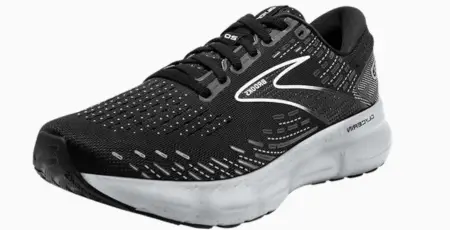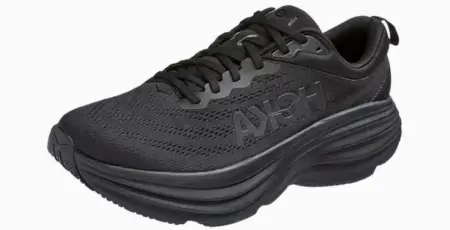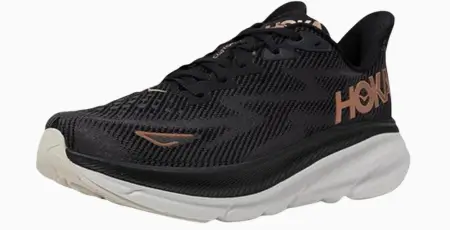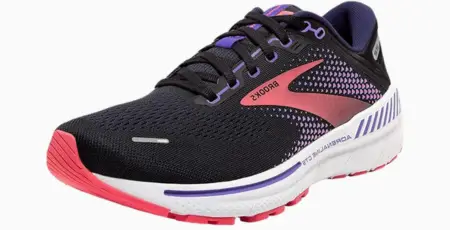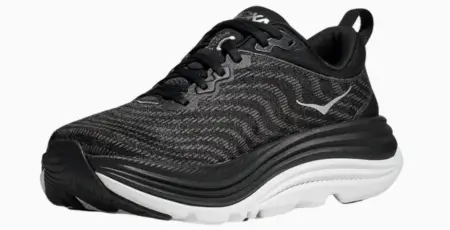Hoka Vs Brooks Running Shoes Comparison Main Differences
Last Updated: January 01, 2025 | Author: Jake Thompson
Is there a clear winner when it comes to the Brooks vs Hoka debate among avid runners with one gaining speedy popularity and the other with record-breaking revenues ?
I've spent considerable time analyzing both brands, taking note of how each pair of shoes responds to the various demands of the road and trail. As a seasoned runner, I understand that the nuances of one's footwear can be the difference between a personal best and an uncomfortable jog.
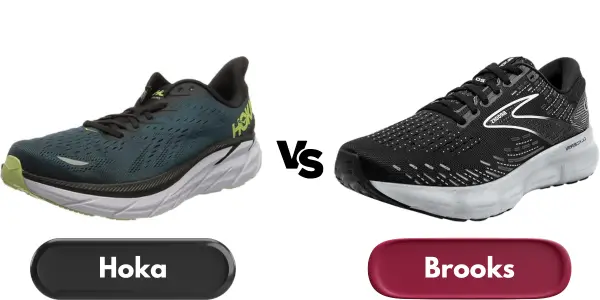
Hokas have often been praised for their oversized midsoles and supreme cushioning, whereas Brooks are lauded for their exceptional stability and adaptive fit. Yet, the decision isn't so straightforward; it's a complex interplay of personal preference, running style, and biomechanics.
In the following lines, I'll share my experiences and observations, with the hope of shedding light on this intricate choice, and perhaps, guiding you toward finding the shoe that feels like it was made just for you.
Table of Contents:
- Key Takeaways
- Pros & Cons
- Brand Focus
- Performance Comparison
- Design
- Comfort
- Cushioning
- Breathability
- Stability Feature
- Fit and Sizing
- Our Recommendations
- Final Verdict
- Frequently Asked Questions
Key Takeaways
- - Hoka is known for stacked cushioning and lightweight design, while Brooks is synonymous with stable running shoes.
- - Hoka emphasizes high foam stack cushioning, while Brooks is starting to adopt this trend.
- - Brooks models tend to have denser midsole cushioning for better long-term durability, while Hoka's midsole materials compress more quickly.
Pros & Cons
Hoka Running Shoes
Pros:- - Exceptional cushioning for comfort and shock absorption.
- - Lightweight despite thick soles.
- - Wide range of models for different running needs.
- - Tend to have a narrower fit.
- - Maximalist design may not appeal to all.
- - Generally higher priced.
Brooks Running Shoes
Pros:- - Diverse model range for various running requirements.
- - Notably durable, especially in outsoles.
- - Comfortable fit with a wider toe box.
- - Less cushioning compared to Hoka.
- - More traditional in design.
- - Sizing may require trial and error.
Brand Focus
While both shoe brands have garnered a following among runners, it's important to delve into the specific ethos and innovations that define each brand's unique approach to running shoe design.
Hoka's brand focus leans toward maximalist cushioning with their Hoka running shoes, emphasizing a plush ride with a distinct rockered geometry. This characteristic allows for a smooth transition from heel to toe, a feature appreciated in Hoka shoes vs Brooks running shoes comparisons.
On the other hand, Brooks models often prioritize structured support, with technologies like GuideRails that gently steer the foot into proper alignment.
As popular running shoe brands, both Hoka and Brooks offer diverse options catering to varied runner needs, yet their foundational design philosophies set them apart within the market.
Performance Comparison
When evaluating the performance of Brooks vs Hokas running shoes, it's essential to consider how the unique design features of each brand meet the specific demands of various running environments and styles.
- - Hoka's maximalist approach offers a significant cushion, which can be a boon for long-distance road running.
- - Brooks often focuses on a stability shoe design, incorporating GuideRails for those who experience overpronation.
- - Hoka models typically provide a smooth and responsive ride due to their rocker geometry, promoting efficient energy return.
- - Brooks shoes emphasize a balance between cushioning and support, aiming to cater to a broader range of runners.
Both brands offer options that address the need for responsiveness and comfort, but the choice may hinge on individual preferences for cushion level and stability features.
Design
Every runner knows that the design of a running shoe is paramount, influencing not only performance but also comfort and injury prevention. When comparing Hoka One One with Brooks running shoes, we're looking at two distinct design philosophies. Hoka is renowned for its oversized midsole and meta-rocker geometry, providing a unique heel-toe transition. Meanwhile, Brooks maintains a more traditional running shoe silhouette, with a focus on stability and a spacious toe box. Both brands utilize advanced foam technologies for cushioning, but Hoka's approach is geared towards maximalism, whereas Brooks offers a more traditional, balanced feel.
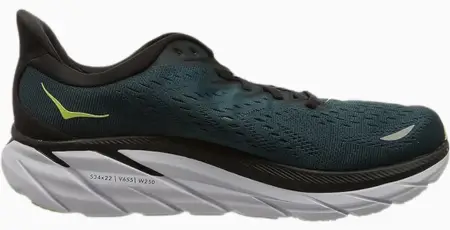
|
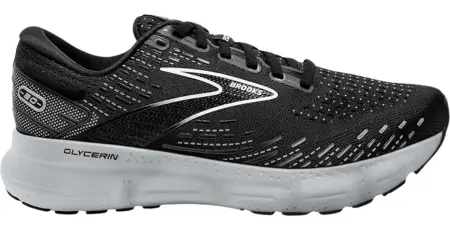
|
|
|---|---|---|
| Feature | Hoka One One | Brooks Running Shoes |
| Midsole | High-stack, cushioned foam | Responsive, adaptive midsole cushion |
| Toe Box | Narrower fit, snug feel | Wider toe box, roomy comfort |
| Design Style | Maximalist, rocker geometry | Traditional, stable construction |
| Heel to Toe | Smooth transition, unique roll | Traditional drop, consistent ride |
Comfort
When considering comfort, cushioning and breathability are critical.
Hoka's oversized midsole offers a plush feel, while Brooks counters with adaptable cushioning technologies such as BioMoGo DNA and DNA Loft.
Both brands also prioritize breathability, utilizing engineered mesh uppers to ensure a balanced climate for the feet during runs.
Cushioning
Cushioning, the critical element of running shoe comfort, varies significantly between Hoka and Brooks, with each brand adopting distinct technologies to enhance the runner's experience. I'm here to delve into the details without bias and with a focus on the technical aspects of these features.
- - Hoka shoes use an EVA foam midsole that's renowned for its plushness, offering a highly cushioned experience.
- - Brooks shoes often incorporate DNA Loft and BioMoGo DNA cushioning, which are engineered for a balance of softness and responsiveness.
- - Hoka's cushioning is characterized by a high stack height, providing a unique sensation as if floating above the ground.
- - Brooks prioritizes a tailored cushioning approach, catering to a wide range of preferences from soft to more energizing.
- - Both brands aim to deliver comfort, but while Hoka emphasizes maximum cushioning, Brooks offers varied cushioning experiences to suit different runners' needs.
Breathability
Breathability is a crucial factor in running shoe comfort, as it directly impacts the runner's ability to maintain dry and cool feet during long distances or in warm conditions.
When comparing Hokas vs Brooks, I find that both brands have made strides in ensuring their running shoes offer adequate ventilation. Typically, a visit to a running store will showcase Hoka and Brooks running shoes with engineered mesh or woven uppers, promoting airflow.
Brooks uppers are designed with a breathable mesh that adapts to the foot's shape, while hokas feature lightweight and open-knit patterns in their upper construction. This technical aspect is vital for athletes who prioritize a cool environment for their feet, reducing the risk of blisters and discomfort during lightweight running.
Stability Feature
Regarding stability features, Brooks running shoes often incorporate GuideRails technology to assist with overpronation and enhance a runner's gait efficiency. This stability feature isn't just about correcting foot movement; it's about optimizing the natural motion path of the runner's joints. I've noticed that the way Brooks designs their GuideRails is to provide discreet support, allowing for comfortable miles without excessive control.
- - GuideRails Technology: Brooks' approach to stability, focusing on knee and joint motion.
- - Overpronation Support: Brooks shoes with GuideRails are recommended for runners who overpronate.
- - Stability Options: Brooks has a wider range of stability shoes compared to Hoka.
- - Runner's Gait: Both brands aim to enhance natural gait but utilize different methods.
- - Main Differences: Hoka typically emphasizes cushioning, while Brooks focuses on the blend of cushioning and stability features.
Fit and Sizing
When choosing between Hoka and Brooks running shoes, it's crucial to consider how the fit and sizing align with your foot shape and size.
Generally, Hoka shoes run true to size but are known to be slightly narrow, especially through the inner arch, which may impact the fit for some runners.
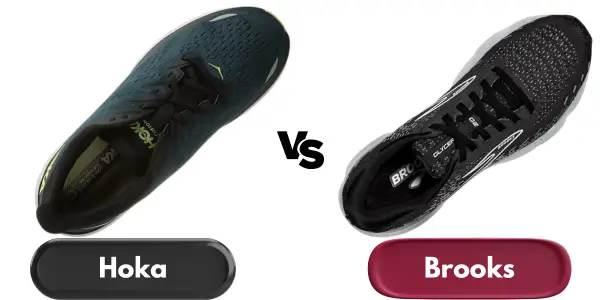
If you have wider feet, you might lean towards Brooks, which offers a wider toe box for a more comfortable fit. Additionally, Brooks recommends sizing up a half size from your usual casual or dress shoes to accommodate foot expansion during runs.
It's important to note that while most shoes run true to size, variations can occur between different models within the same brand, so it's always best to try them on or check the specific sizing chart provided by the manufacturer.
Our Recommendations
Hoka vs Brooks for Standing All Day: Brooks Glycerin vs Hoka Bondi
Brooks Glycerin 20
Brooks Glycerin 20 is the ultimate choice for all-day standing comfort. Its plush cushioning and superior arch support reduce fatigue, while the adaptable fit ensures stability. With durable materials and innovative technology, it delivers unparalleled comfort, making it the best shoe for prolonged standing, enhancing your workday or leisure activities.
Hoka Bondi 8
Hoka Bondi 8 stands out as the top choice for all-day standing. Its exceptional cushioning and ergonomic design provide superior support and comfort, minimizing fatigue. With a lightweight yet durable build, it excels in long-lasting comfort, making it the ultimate shoe for those demanding hours on your feet.
Hoka vs Brooks for standing all day: Brooks Ghost vs Hoka Clifton
Brooks Ghost 15
The Brooks Ghost 15 takes the lead as the ultimate walking shoe. Its combination of plush cushioning and responsive support offers an unbeatable walking experience. With a lightweight, breathable design and durable construction, it provides unmatched comfort and performance, making it the top choice for walkers of all levels.
For an in-depth comparison of Brooks models, check out ' Brooks Ghost Vs Glycerin Comparison ', which offers insights into their unique features and performance.
Hoka Clifton 9
The Hoka Clifton 9 stands out as the premier walking shoe. Its exceptional cushioning and lightweight design provide optimal comfort and support, reducing fatigue during long walks. With a responsive, smooth ride and durable construction, it delivers unmatched walking performance, making it the top choice for walkers seeking comfort and style.
Brooks vs Hoka Running Shoes: Brooks Adrenaline vs Gaviota
Brooks Adrenaline GTS 22
The Brooks Adrenaline GTS 22 ranks as the ultimate running shoe. Its perfect blend of cushioning and stability provides unmatched support, reducing the risk of injury. With a lightweight, responsive build and durable materials, it delivers exceptional running performance, making it the top choice for runners seeking comfort and speed.
Explore the differences between Brooks Adrenaline and another popular model in ' Brooks Levitate Vs Adrenaline Running Shoes ' for a detailed comparison.
Hoka One One Gaviota 5
Hoka One One Gaviota 5 is the pinnacle of running footwear. Its plush cushioning and superior stability offer unbeatable comfort and injury prevention. With a lightweight, responsive design and durable construction, it excels in delivering top-tier running performance, solidifying its place as the ultimate choice for runners seeking both support and speed.
Final Verdict
When it comes to choosing between Hoka and Brooks running shoes, the decision boils down to your specific needs. Brooks stands out as the best overall option, offering a well-balanced blend of cushioning, stability, and durability, ideal for various types of runners and suitable for standing all day or walking. Hoka, on the other hand, is the go-to for those seeking maximum cushioning, providing a cloud-like feel that's perfect for long-distance comfort. Whether you prioritize overall performance or cushioning, both brands offer distinct advantages, making the choice a matter of personal preference and running style.
Beyond our comparison of Brooks and Hoka, if you're dealing with heel spurs, consider the expert recommendations in Best Shoes for Heel Spurs for targeted support and comfort.
Frequently Asked Questions
1. What are the main differences between Hoka vs Brooks running shoes, especially for trail running?
Hoka and Brooks are two prominent brands in the running shoe market, each with unique features. Hoka running shoes are known for their highly cushioned soles and lightweight design, making them a popular choice for trail runners seeking comfort and protection on uneven terrains. Brooks shoes, on the other hand, often emphasize stability and support, with models like the GTS being a favorite for their balanced cushioning and structured fit. The primary difference lies in Hoka's focus on plush cushioning and Brooks's emphasis on adaptive support.
2. Do Brooks and Hoka shoes tend to fit differently, and should I size up or down?
When choosing a pair of running shoes from either brand, Brooks or Hoka, it's important to consider how the shoe fits. Generally, Hoka shoes have a wider toe box, offering more room for foot expansion during long runs. Brooks models, such as the GTS, might fit more true to size from your street shoe. It's common advice to go up half a size in running shoes to accommodate foot swelling during runs, but this can vary based on individual fit and model.
3. Are Brooks and Hoka shoes suitable for walking as well as running?
Both brands offer versatile shoes that are designed for running but can be excellent for walking too. Hoka’s shoes, with their ample cushioning, provide comfort and support that benefit walkers, especially those who experience knee pain or require extra shock absorption. Brooks shoes, like the Adrenaline GTS, are also well-suited for walking, offering stability and cushioning that support natural foot motion.
4. What are some key features of Hoka and Brooks shoes, and how do they compare?
Comparing both brands of running shoes reveals distinct features in each brand. Hoka is best known for its oversized midsoles and lightweight construction, providing exceptional cushioning that reduces impact. Hoka running shoes tend to offer a smooth, rolling motion during runs. Brooks shoes, like the Adrenaline GTS series, often feature a more traditional running shoe design with a focus on stability and support, ideal for runners who need more structure. The GTS models, in particular, are renowned for balancing cushioning and control.
5. How do Hoka and Brooks price their running shoe models, and is there a significant difference?
The price of Brooks and Hoka running shoes can vary depending on the model and specific features. Generally, both brands offer a range of prices, with Hoka typically positioned in the higher end due to its specialized cushioning technology and innovative designs. Brooks, including popular models like the GTS 22, tend to be slightly more affordable, though pricing is competitive and often reflects the level of technology and features in the shoe.
Share this:

